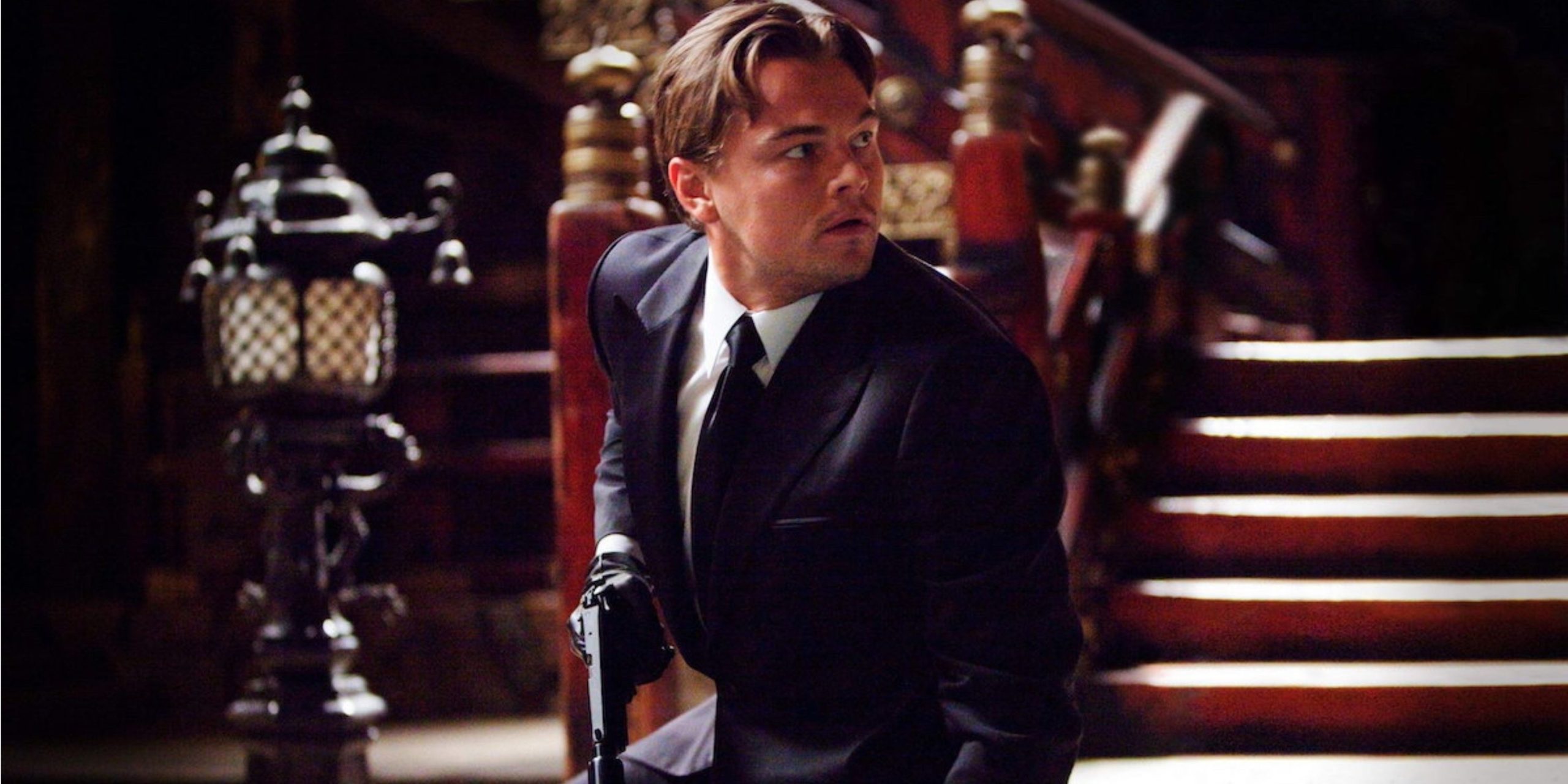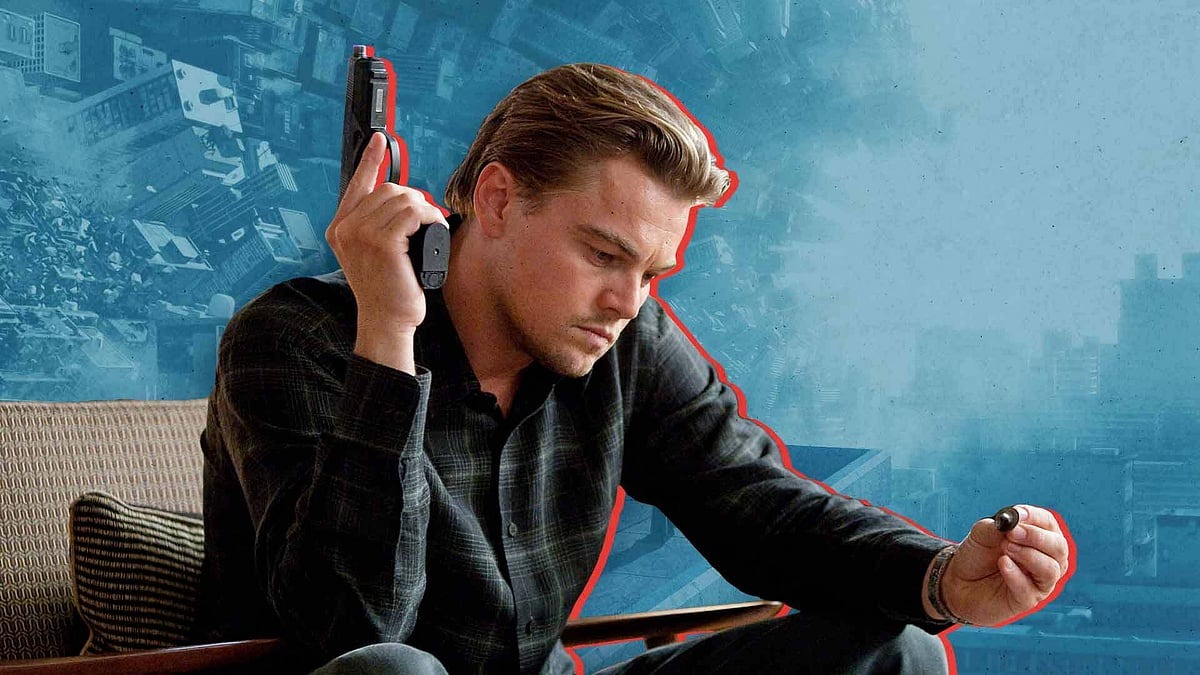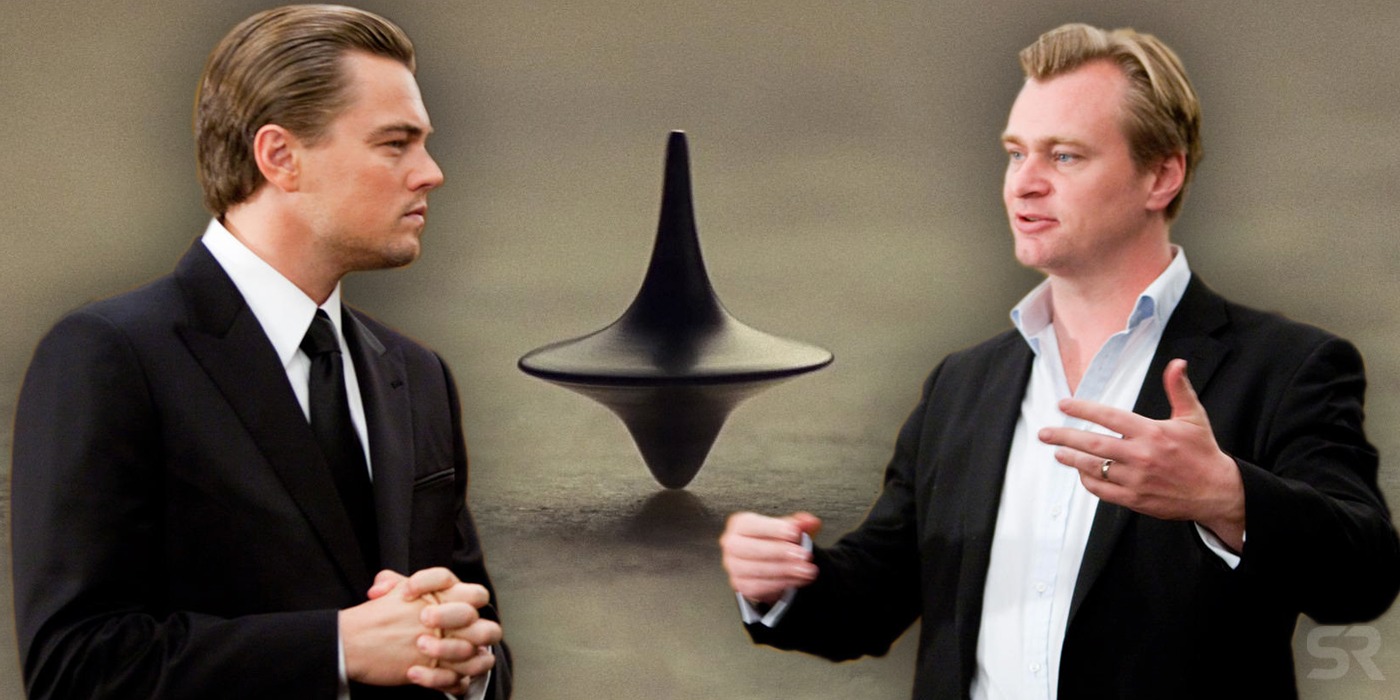Instead of focusing first on Cobb spinning the top, it makes sense to start from Mal’s interruption during the final part of the mission. She appears and disrupts the plan by shooting Fischer, which forces Ariadne to accompany Cobb into Limbo to save Fischer’s trapped consciousness.
Down in Limbo, Cobb is pushed to face the version of Mal he created, leading to a moment where he must accept her death and release himself from the guilt. While this is going on, Fischer is brought back, and Cobb locates Saito, who is also lost in Limbo.

Eventually, the mission works out, and everyone seems to return to the real world. Cobb is later seen at the airport where he meets his father-in-law, Professor Miles, who helps him get through customs—thanks to Saito’s earlier promise. Upon reaching home, Cobb gets to see his children’s faces at last.
However, just before joining them, he decides to test his spinning top to verify if he’s awake. Instead of waiting to see if it falls or continues spinning, he turns away and steps outside to his children, leaving the spinning top behind as the screen fades to black.
This deliberate choice not to check if the top falls leaves viewers without a definite answer about what reality Cobb is in.
Michael Caine Offers A Clue About Whether Cobb Was Dreaming
When looking for clarity on that final scene, something Michael Caine shared might shed light. Speaking in an interview with Esquire, Caine recalled being confused about which parts of Inception were dreams and which were real.
He explained that when he asked Christopher Nolan to explain it to him, the director told him plainly: “If you’re in the scene, it’s real.” Based on that logic, any scene where Caine’s character, Professor Miles, is present should be real, including the film’s final airport and homecoming scenes.
Since Miles appears in the last moments, that could mean Cobb truly is in reality. But at the same time, it’s unclear whether Nolan’s explanation was meant to apply to how the film ends. There’s a chance that Nolan’s comment to Caine was just a way to guide his performance rather than a hint for the audience.
The mystery seems to go deeper than whether Cobb is dreaming or not.
Every Clue To Whether Cobb Is Still Dreaming In Inception’s Ending
From the time Cobb and Saito regain consciousness on the airplane, the film becomes more deliberately vague, placing a heavy focus on perception and personal interpretation. These elements had already been running through the movie, but now they stand out even more clearly.
From that point to the very end, the characters hardly speak and the visuals stop offering clear answers. This change creates space for various interpretations. If Cobb is still stuck in a dream, then it’s possible everyone around him—including his team and his children—are merely projections from his subconscious.
But if the mission truly ended and Saito kept his word, then Cobb’s return to his children was real. Both possibilities raise questions. For instance, is it realistic that Saito could fix Cobb’s legal problems with just one call? Or is that part of a wish Cobb is projecting within Limbo?
There’s also the detail of Cobb using Mal’s totem, which was originally designed for her. That might suggest the totem no longer functions the way it should since someone else is using it. Still, only Mal and Cobb knew its weight and balance, and with Mal gone, Cobb remains the only one who can judge if it’s real.
So, it could still serve its purpose for him. Some fans have raised questions about whether Miles’s appearance at the airport was part of Cobb’s plan or another dream projection. There’s a phone on the plane, so Cobb could have made arrangements for pickup.
Considering how much planning went into the inception job, Cobb wouldn’t likely miss something so important. Another subtle detail people point to is Cobb’s wedding ring. He wears it during dream scenes but not in scenes considered to be reality—such as when he’s at the airport. This could suggest he’s truly awake.
Then there’s the matter of Cobb’s kids looking just as they did in his memories—same age, same clothes. That detail may hint he’s still dreaming. But the casting credits list two sets of actors for the children, showing they are played by older versions too.
This suggests there are differences, however small, between memory and present-day.
How Christopher Nolan Explains Inception’s Ending
Christopher Nolan purposely kept the ending of Inception open to interpretation. He spoke about this in a conversation with Entertainment Weekly, where he confirmed that he wanted the audience to leave with questions.
According to him, including a clear answer about whether the top fell would take away from the experience. He said the decision to cut the scene right before the top’s fate is shown wasn’t an oversight—it was intentional.

Nolan viewed that abrupt cut as the emotional “kick” for the audience, pointing out that the most important thing is Cobb walking away from the top to be with his children. Instead of treating the spinning top as the heart of the story, Nolan suggests that Cobb’s decision to ignore it is what matters.
The movie constantly uses misdirection, and the characters talk about how ideas—once planted—can take over. Even Cobb is shown as unreliable, with Ariadne and Arthur pointing out that he bends or breaks his own rules. Because of that, what Cobb sees at the end may not be something the audience can trust either.
Another idea Nolan puts forward is that the deeper one goes into dreaming, the more creative and flexible the mind becomes in forming images. That ties back to the spinning top itself. Nolan uses it not just as Cobb’s guide but as a trick for viewers.
Early in the film, Cobb tells Saito how powerful a simple idea can be. He says, “Once an idea has taken hold in the brain, it’s almost impossible to eradicate.” The story of Inception works on that exact concept, and by showing the top spinning at the end, the movie implants the idea that it matters—when it might not.
What Inception’s Ending Means
The conversation about Inception’s last scene has sparked countless theories online since its release in 2010. Most debates center on whether Cobb stayed in a dream or finally reunited with his children in real life.
But there’s a different question that adds more meaning: did Cobb find peace, regardless of whether it was real or not? At the start of Inception, Cobb is alone in a hotel room after the mission with Saito. He’s spinning the top with a gun in hand, consumed by doubt and fear.
Back then, he was a man driven by the need to prove what was real. Throughout the film, that obsession continues—Cobb constantly spins the top to reassure himself. By the end, he spins it one last time but walks away before seeing what happens. His children rush to meet him, and he forgets about everything else.
He no longer worries about dreams or reality, inception or extraction. His joy comes from being with them, which for him is enough. That moment—turning his back on the top—completes his transformation. This film presents the idea that reality is shaped by what brings contentment.
For Cobb, choosing his children and letting go of the top means choosing his peace of mind. That is the final message Nolan seems to leave with the audience.



